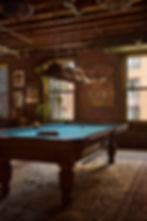
Legacy Club
of Boston
Private Members-Only
Business & Social Club.

Plan Your Next Event
Event Engagements
Legacies may be marked by moments of notable achievements in business, sports, technology, philanthropy, science, entertainment, or any other discipline. Unimaginable triumphs in sports, or business successes beyond belief, highlight careers and lives that will not soon be forgotten. But these successes are just milestones. Typically, the road to achievement is paved with a blend of perseverance, determination, compassion, humility, generosity, failures, focus, and fearlessness, that often go unnoticed at life's podium. But these attributes are what legacies are built on. It is our goal to honor the legacies of our predecessors, to continue to grow our own, and to lend a hand to those beginning their journey. Legacy Club of Boston is an accumulation of its Members' experiences, and being built for us to both enjoy and to carefully pass on a legacy to the generations that follow.

Club Moments

Exceptional Amenities & Services
Private Members-Only
Business & Social Club.

Honor.
Honoring the individuals, organizations, and achievements that are rooted in our community, a part of our history, and that built our identity.
Creating.
Creating a community where relationships transform into possibilities. Through comfortable unforced social interactions, bonds are forged, and opportunities blossom into actions.
Inspiring.
Inspiring not just future generations, but one another. Aspiring for greatness, to assist others, and to create a legacy.

Visit Us
Location
180 Canal Street, Fifth Floor,
Boston, MA 02114
Upcoming Club Gatherings

HISTORY
LIVES HERE.
Where the Past Meets the Present

























